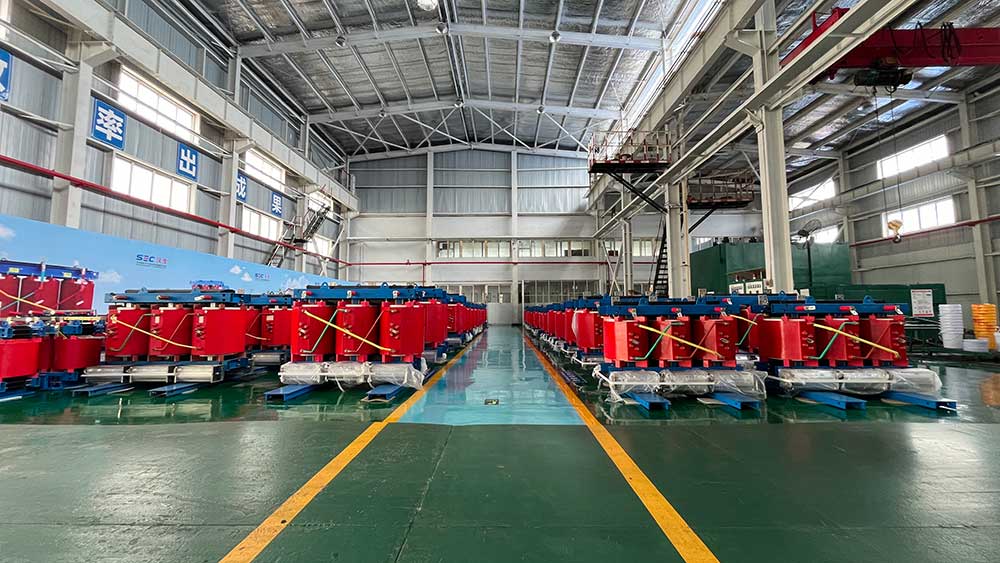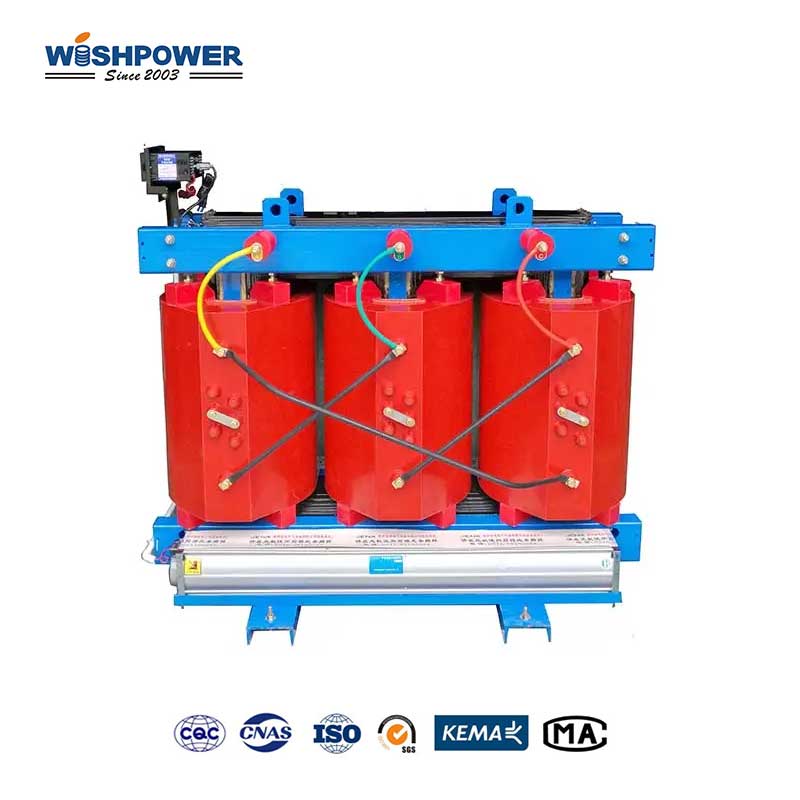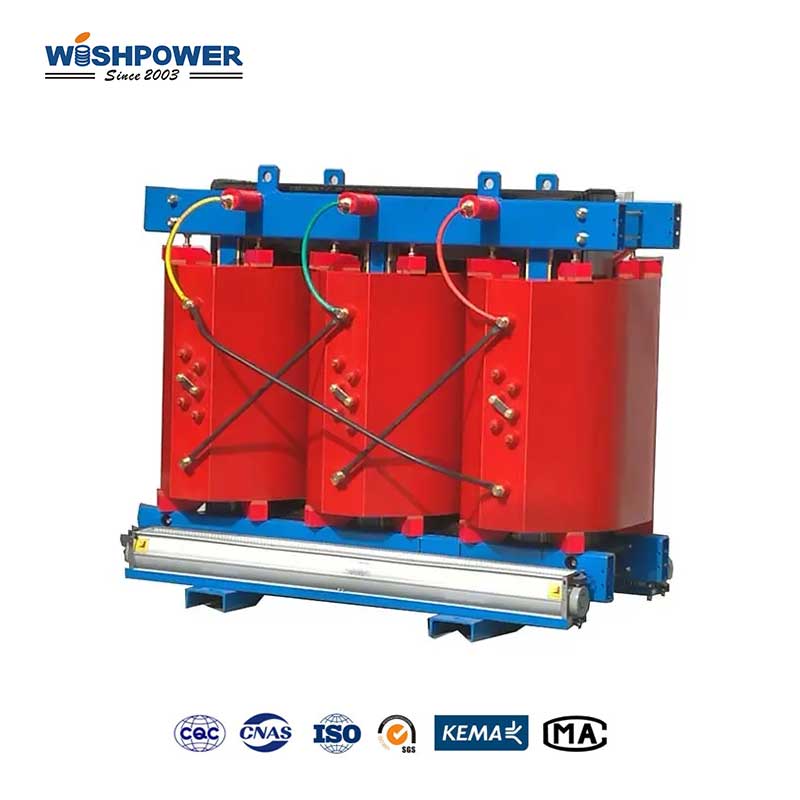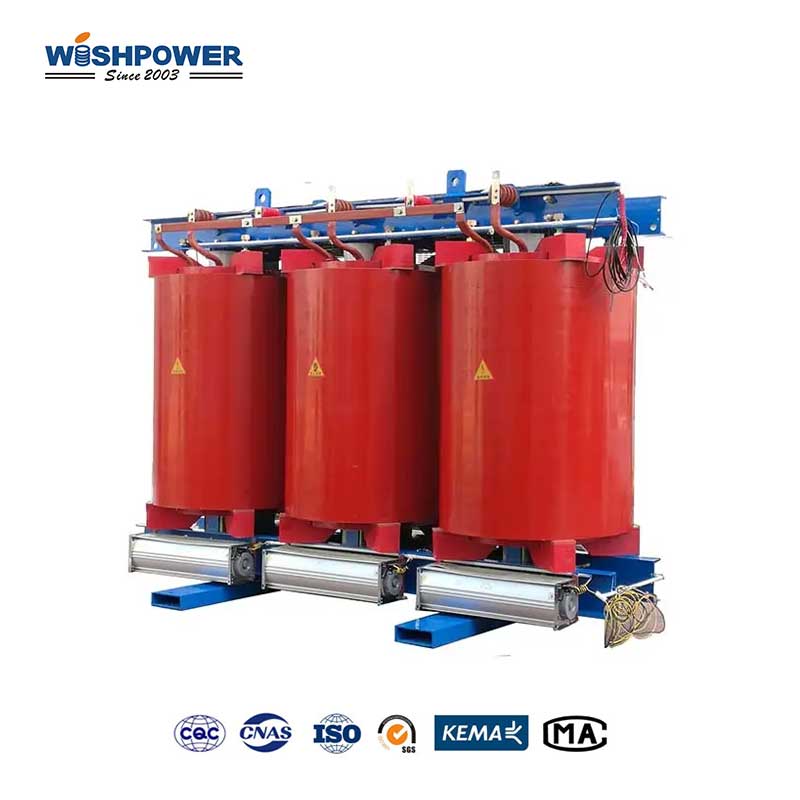Specification
|
Rated Capacity
|
No load Loss(W)
|
Load Loss(W)
|
No Load current(%)
|
|
100kVA
|
700
|
2200
|
2.4
|
|
160kVA
|
880
|
2960
|
1.8
|
|
200kVA
|
980
|
3500
|
1.8
|
|
250kVA
|
1100
|
4000
|
1.6
|
|
315kVA
|
1310
|
4750
|
1.6
|
|
400kVA
|
1530
|
5700
|
1.4
|
|
500kVA
|
1800
|
7000
|
1.4
|
|
630kVA
|
2070
|
8100
|
1.2
|
|
800kVA
|
2400
|
9600
|
1.2
|
|
1000kVA
|
2700
|
11000
|
1.0
|
|
1250kVA
|
3150
|
13400
|
0.9
|
|
1600kVA
|
3600
|
16300
|
0.9
|
|
2000kVA
|
4250
|
19200
|
0.9
|
|
2500kVA
|
4950
|
23000
|
0.9
|
The table above is just one of our product parameters. If you want more information, please get in touch with info@wishpower.net
What is the Amorphous Distribution Transformer?
The Amorphous Distribution Transformer is a kind of transformer that is specially engineered to be used in electricity distribution systems by using an amorphous metal core to provide outstanding energy efficiency. Unlike traditional distribution transformers which commonly use silicon steel cores, the amorphous metal core in these transformers features a noncrystalline atom structure that leads to reduced magnetic losses. However, their characteristic makes them particularly effective at minimizing core losses, which represent a major source of energy loss in traditional transformers, particularly during no-load or low-load conditions. The resulting design lends itself to energy-conscious applications in rural and urban distribution networks in which minimal energy loss is essential to maintaining overall system efficiency. It can reduce the no-load losses consequently lowering operational costs and long-term savings for utilities. Moreover, its energy-saving capabilities match the global targets aiming to reduce the carbon footprint and praiseworthily comply with the stringent energy regulations; hence it is recognized as an environmentally friendly solution in contemporary power systems.

Features
- Lower No-Load Losses
Unlike the conventional transformer core, the amorphous transformer maintains minimal no-load losses, thereby resulting in high efficiency for the transformer under low or no power demand conditions.
- Faster Magnetic Response
Due to its noncrystalline structure, the amorphous metal core responds more quickly to changes in magnetic field and hence provides better performance under varying load conditions.
- Reduced Magnetostriction
Although the core vibration and noise are much less in Amorphous Distribution Transformers as compared with conventional transformers due to the less magnetostriction, other problems were encountered.
- Higher Energy Savings
Hysteresis and eddy current losses are lowered by these transformers, which, given the reduction in both, leads to greater energy savings over time, especially in energy-efficient applications.
- Lightweight Design
In general, the amorphous core is lighter than the silicon steel core and thus enables the construction of a more compact and lightweight transformer for ease of transportation and installation in particular applications.
- Improved Thermal Management
This lowers operating temperatures, and improves the thermal performance of the transformer, potentially increasing the life of the transformer, and reducing cooling needs.
Compared with traditional dry-type transformers
Compared with a conventional dry-type transformer, the amorphous core-type transformer greatly differs in efficiency, core material, and energy performance. The key distinction lies in the core material: A dry-type transformer is primarily a traditional part utilizing a crystalline operational silicon steel core, whereas an amorphous core transformer relies on a non-crystalline, amorphous metal core. The great difference goes closer to how each transformer handles magnetic flux and energy loss.
Because of its lower energy losses, the amorphous metal core significantly reduces both hysteresis and eddy current losses in amorphous core transformers, thus lowering the core losses, especially when the transformer is in a no-load situation. This also makes them much more energy efficient than traditional dry-type transformers whose core losses are higher because of the crystalline nature of silicon steel. Therefore, the amorphous core transformer is more appropriate for use in those applications that have high requirements for energy conservation and efficiency, especially those associated with renewable energy integration and smart grids.
However, traditional dry-type transformers tend to be less expensive to purchase initially, while amorphous core transformers do not match the long-term energy-saving potential of amorphous core transformers. In case fire safety is important, dry-type transformers are usually selected because of their air-cooling and non-oil insulating structure. While their overall energy efficiency is lower, especially in systems with a transformer operating in idle or lightly loaded conditions.
Market Trends
The demand for energy efficiency and sustainability in power distribution is the reason behind the market trend of the amorphous steel core transformer. As energy losses continue to diminish and carbon emissions are curtailed, these transformers are gaining prominence across developed and emerging markets. Interest has been spurred by governments and energy regulators worldwide pushing stricter efficiency standards and encouraging the use of technologies that minimize power waste. Their ability to greatly reduce no-load losses renders them uniquely appealing to applications where integrations with renewable energy, smart grids, or rural electrification projects are of interest. With the spread of sustainability initiatives and energy efficiency regulations, the market is forecast to grow, essentially in environments with strong environmental policies and energy efficiency goals.
Certificate

Factory

Hot Tags: Amorphous Distribution Transformer, Transformer, China, manufacturers, ISO factory, wholesale, KEMA, high quantity, best, price, low to high voltage



















